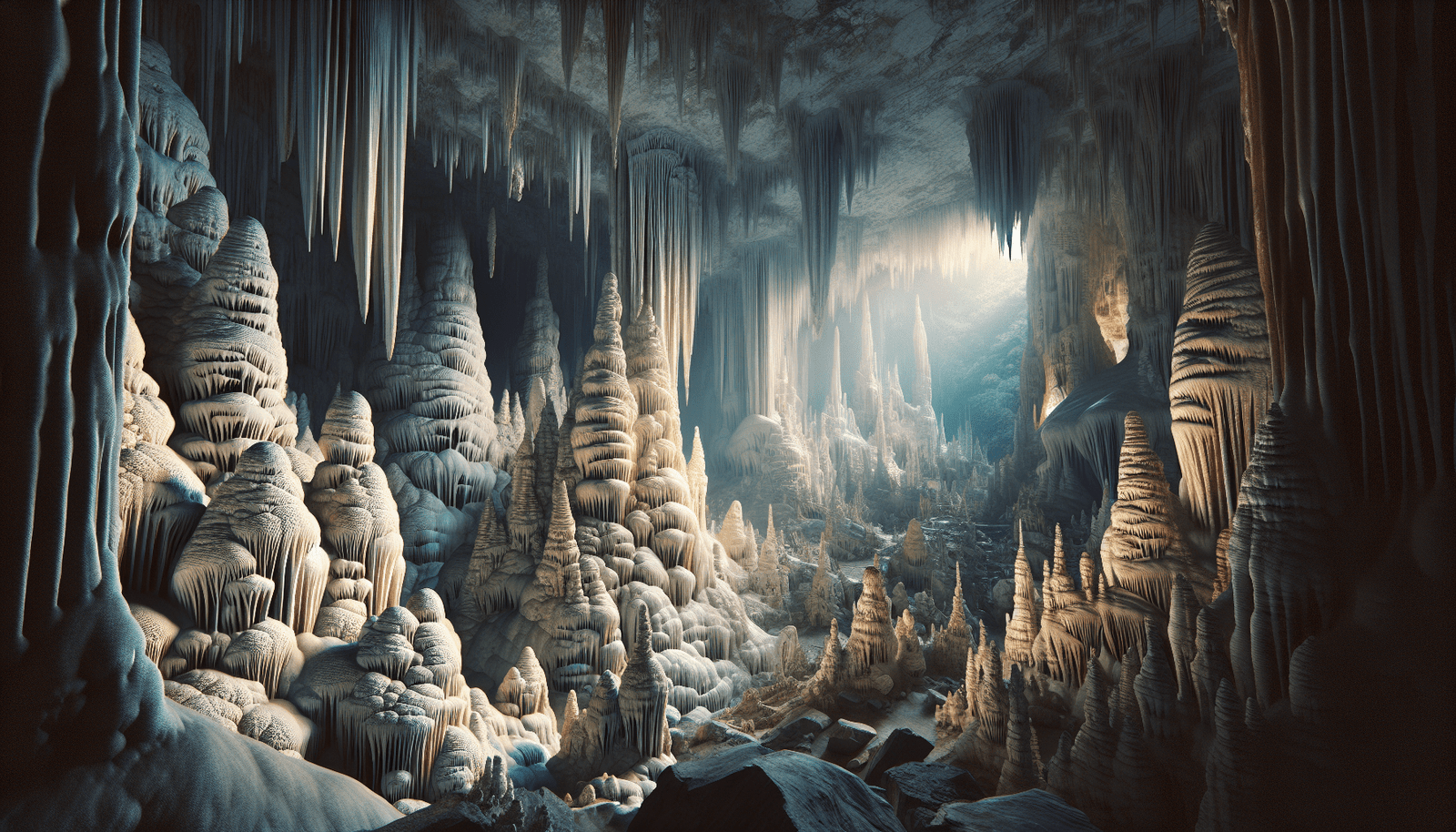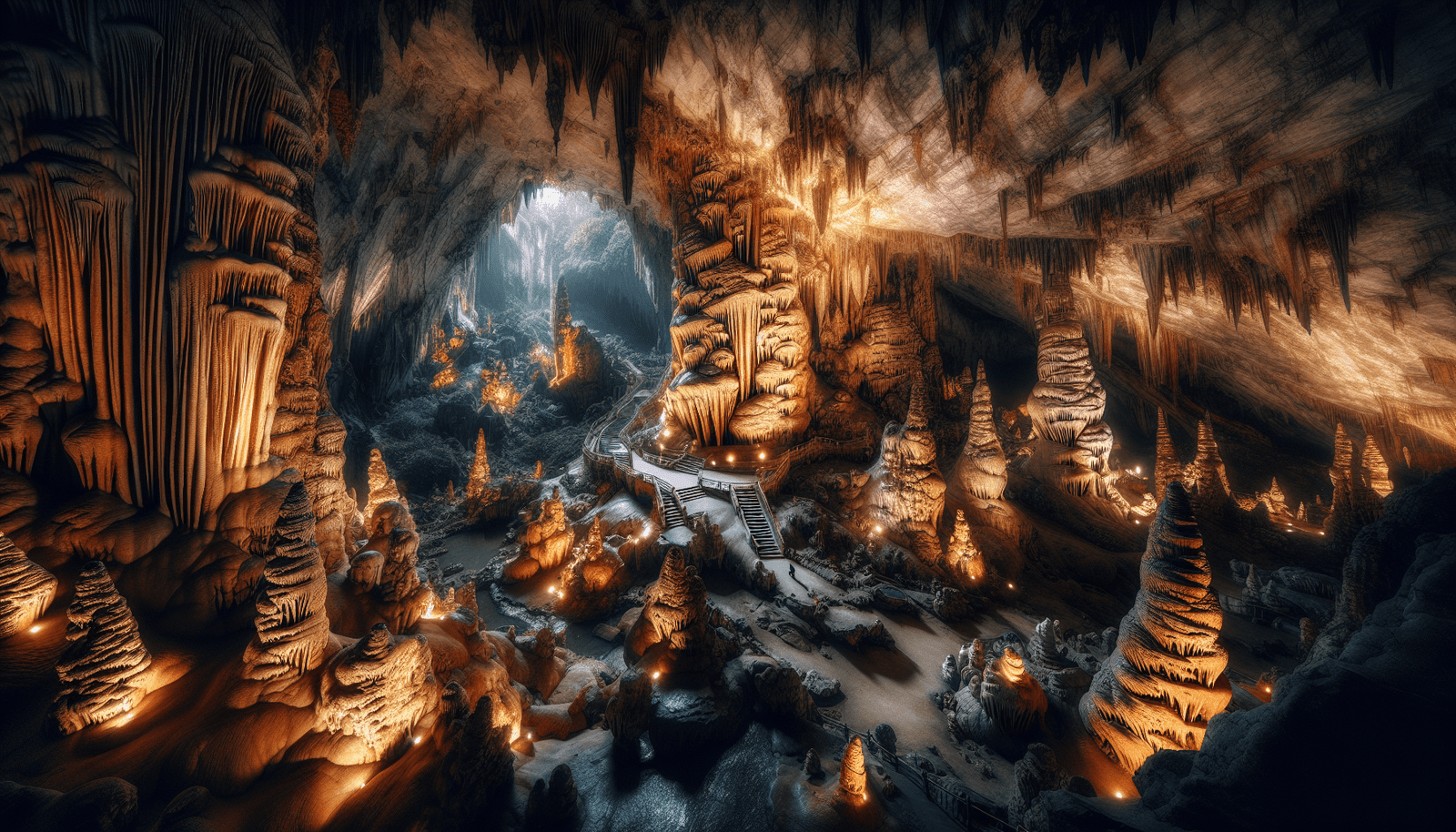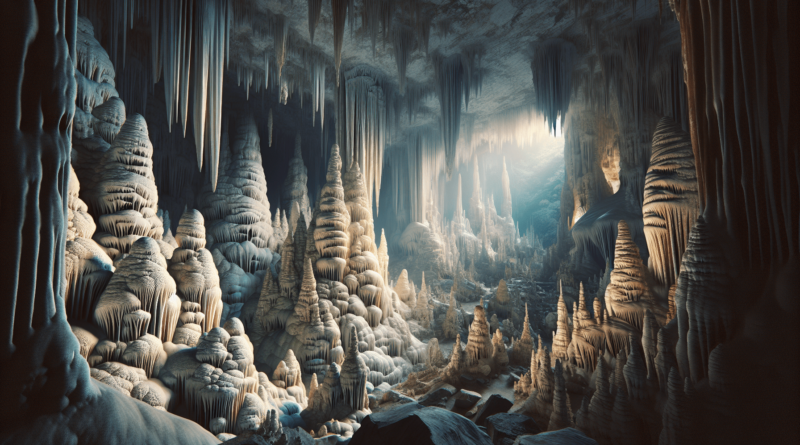Caving And Spelunking
Your day-to-day explorations may seem exciting, but have you ever considered stepping out of your comfort zone and into the depths of the earth? This article brings the adventurous, yet scientific world of caving and spelunking right to your fingertips. It outlines all you need to know about the fascinating realms hidden beneath the surface of our planet, from those absolute raw thrills for adrenaline junkies, to the vital scientific research carried out by hyper-researched speleologists. Expect to learn about the necessary gear, vital safety procedures, and the most notable caves and caverns worldwide, and get ready for your own underground adventure.

Understanding Caving and Spelunking
Hey there! So you’re interested in caving and spelunking, aren’t you? Gearing up for an unforgettable adventure or just tantalized by the enigma of these natural marvels? No matter your reasons, you are in for a fascinating journey – a descent into the subterranean world. Let’s get started!
Definition of caving and spelunking
Caving…Spelunking. Two words, rooted deeply in adventure, mystery, and the enigmas of the underworld. While some use these terms interchangeably, they’re slightly different. Caving is the recreational sport of exploring non-commercial, wild cave systems, often practised with an element of scientific exploration. Spelunking, on the other hand, is more oriented towards the casual exploration of caves, sometimes even in developed commercial caves.
History and progression of caving as an outdoor activity
Caving, believe it or not, has a pretty old history. Archaeological evidence confirms that ancient humans roamed caves for shelter, protection, and even artistic expression. But as a recreational activity, caving truly took off around the late 19th century. Over the last couple of hundred years, it has metamorphosed from hearty pastime to a recognised sport, complete with training programs, gear, and associated conservation efforts.
Differences and similarities between caving and spelunking
Think caving and spelunking are the same? Not quite. Both involve exploring caves, true. But while caving is more scientific and tactical in nature, spelunking is more casual. As a spelunker, you might not need as much specialized knowledge or equipment as someone who’s caving. But remember both demand a respect for safety protocols and cave preservation.
Types of Caves
Did you know that not all caves are the same? That’s right – they can form in various ways and come in many shapes and sizes. Here are a few common types:
Limestone caves
Limestone caves are perhaps the most common type you’d encounter, created over thousands of years by the natural process of water dissolving limestone, a happening that creates dramatic stalactites and stalagmites.
Sea caves
Sea caves or coastal caves are formed by the relentless pounding of ocean waves against a rocky shoreline. Over time, this constant erosion leads to breathtaking grottoes and tunnels.
Lava tubes
You might feel like you’ve stepped onto another planet when you enter a lava tube. These tubes form when lava from a volcanic eruption cools on the surface, but remains hot and fluid underneath causing tunnels to be formed.
Ice caves
No, we’re not talking about the hideout of a cartoon villain. Ice caves are natural caves where the interiors are covered in ice year-round, providing a chilly but mesmerizing spectacle.
Sandstone caves
Formed when wind and water erode away the softer portions of a sandstone cliff or ridge, these caves offer quick formations and rapid changes.
Inside the Cave: Nappe, Stalactites, and Stalagmites
Inside a cave, you’ll find a world straight out of fantasy – an underworld palace of stone.
Understanding cave formations and structures
From towering stalactites that hang ominously from the ceiling to stalagmites that reach up from the ground like the rock’s upward yearning, caves can be quite a sight. These formations, along with the curtains, flowstones, and helictites, provide fascinating structures to navigate during your exploration.
The formation process of stalactites and stalagmites
Stalactites and stalagmites are created when water seeping down from the surface carries minerals with it. When the water evaporates, these minerals are left behind, gradually amassing to form incredibly beautiful, if somewhat surreal structures, growing one droplet at a time over hundreds, thousands, even millions of years.
Recognizing different cave features
Stalactites hang “tight” to the roof, while stalagmites “might” reach the ceiling one day – that’s a handy way to remember it. Also, look out for columns (when stalactites and stalagmites join), flowstone (sheet-like deposits of calcite) and cave pearls (small, smooth, rounded formations).

Cave Ecosystems and Biodiversity
Once you step into a cave, remember, you’re not alone. These mystical spaces also house an array of plants, animals, and microbes.
Common animal species found in caves
Many species have taken up residence in caves permanently, evolving over time to adapt to the dark and inhospitable conditions. Animals like bats, salamanders, spiders, and beetles are frequent residents.
Cave dwelling plants
Plants in caves? You bet! In the cave entrances and twilight zones, where a little sunlight penetrates, you may find certain species of mosses, ferns, and flowering plants.
Microbial life in caves
While plants and large animals are impressive, do not disregard the unseen heroes of the cave ecosystem – microbes! They play an essential role in breaking down materials and making nutrients available in an otherwise nutrient-sparse environment.
Unique ecosystems found in caves
Cave ecosystems are incredibly resilient, having adapted to harsh conditions. Darkness, near constant temperatures, and nutrient scarcity have led to some unique lifeforms and relationships.
Caving Equipment and Tools
Embarking on a caving adventure isn’t a spur-of-the-moment decision. Proper gear is a must.
Basic caving gear: headlamps, helmets, gloves
A good-quality helmet is non-negotiable. Ditto for a reliable headlamp to illuminate the darkness and gloves to protect your hands from rough surfaces.
Technical gear for advanced spelunking: harnesses, descending devices, ascenders
If you’re spelunking, your gear list extends. Harnesses, ropes, descending devices, and ascenders are essential for deep cave exploration or ascents/descents.
Safety equipment: first aid kits, whistles, communication devices
Never underestimate the importance of safety equipment. First aid kits, whistles for communication, and reliable communication devices are vital to your well-being inside the cave.
Cave Safety and Preservation
Safety first, always. But your duty as a caver or spelunker doesn’t end there. Preserving these natural wonders for future generations is equally paramount.
Safety measures to take when caving
It’s crucial to be aware of potential risks and to have a contingency plan in place. Always let someone know where you’re going and when you’re expected to return. Never cave alone – always go with a buddy or a group.
Cave etiquette and preservation guidelines
Remember, caves are delicate environments. Resist the urge to touch formations (the oil from our skin can disrupt growth), disturb wildlife, or leave any waste behind. Just as you found it, should always be your mantra.
The role and importance of cave conservation
Cave conservation is critical for preserving these unique habitats and their biodiversity. Caving organisations worldwide are committed to the conservation of these fragile ecosystems and their inhabitants.
Health and Physical Fitness requirements for Caving
To the uninitiated, caving might look like an enjoyable meander through an otherworldly landscape. But in reality, it demands strength, endurance, and agility.
Physical demands of caving
Crawling, climbing, squeezing through narrow passages – caving can be a physically intensive activity. Flexibility, muscle strength, and cardiovascular fitness all factor into a successful caving experience.
Fitness level required
Ideally, you should be in good physical shape before you venture into a cave. Having good cardiovascular endurance, as well as strength in your arms, legs, and core muscles, will make your adventure more enjoyable.
Health benefits of caving
Aside from the thrill of exploration, caving provides plenty of health benefits, including improved cardiovascular health, increased strength and flexibility, and even mental benefits such as stress reduction and improved problem-solving skills.
Caving Techniques and Skills
Knowing your way around inside a cave, both literally and figuratively, can make your adventure comfortable and safe.
Basic techniques: crawling, climbing and squeezing
In caves, you’ll often adapt the moves of the animals indigenous to those caves. Crawling through low-lying areas, climbing over rock formations, or squeezing through tight spots will be second nature soon.
Advanced maneuvers: abseiling, zip-lining
For the more committed or experienced cavers, skills like abseiling and zip-lining might be needed, especially when dealing with vertical caves or pits.
Navigating a cave: map reading and route finding skills
The ability to read a cave map and find your route is crucial. Remember, GPS doesn’t work underground. Learn the basics of map reading and practice, practice, practice.
Challenges and Dangers in Caving
Caving can be risky but knowing the hazards and how to avoid or mitigate them is the key to safe caving.
Typical hazards in caves: rockfall, flooding, hypothermia
From rockfall and flooding to hypothermia, there are risks inherent in caving. Yet, these risks can be greatly minimized with proper knowledge, planning, and respect for the cave environment.
Unforeseen dangers: getting lost, unexplored passages
Getting lost or stuck in unexplored passages can turn a fun trip into a perilous situation swiftly. Map reading abilities, route planning, and general awareness can help avoid such situations.
How to react in emergencies
A calm mind is your best asset during an emergency. Keep a level head, assess your situation objectively, and use your knowledge and the resources you have to respond appropriately.
Famous Caves for Caving and Spelunking
People from across the globe flock to some famous caves to experience their mystique firsthand.
World’s most famous caves and their features
From the Mammoth Cave in Kentucky, which is the longest cave system known, to the Waitomo Glowworm Caves in New Zealand, renowned for their glowworm population, the world is full of amazing subterranean landscapes.
Unique caves for spelunking
Lechuguilla Cave in New Mexico and Krubera Cave in Georgia are just a couple of the many compelling caves spelunkers favor for their unique features and challenges.
What makes these caves popular to cavers
The allure of these famous caves could be attributable to fascinating geology, intriguing history, breathtaking mineral formations or simply their size and complexity. Every cave has a story to tell, and it’s no wonder explorers are drawn to uncover their secrets.
Caving and spelunking are not just about traveling to a different place, but about traveling to a different world altogether. It’s about exploring the unknown, appreciating nature’s marvels, and pushing physical and mental boundaries. Are you ready for your journey into the underbelly of the Earth?




